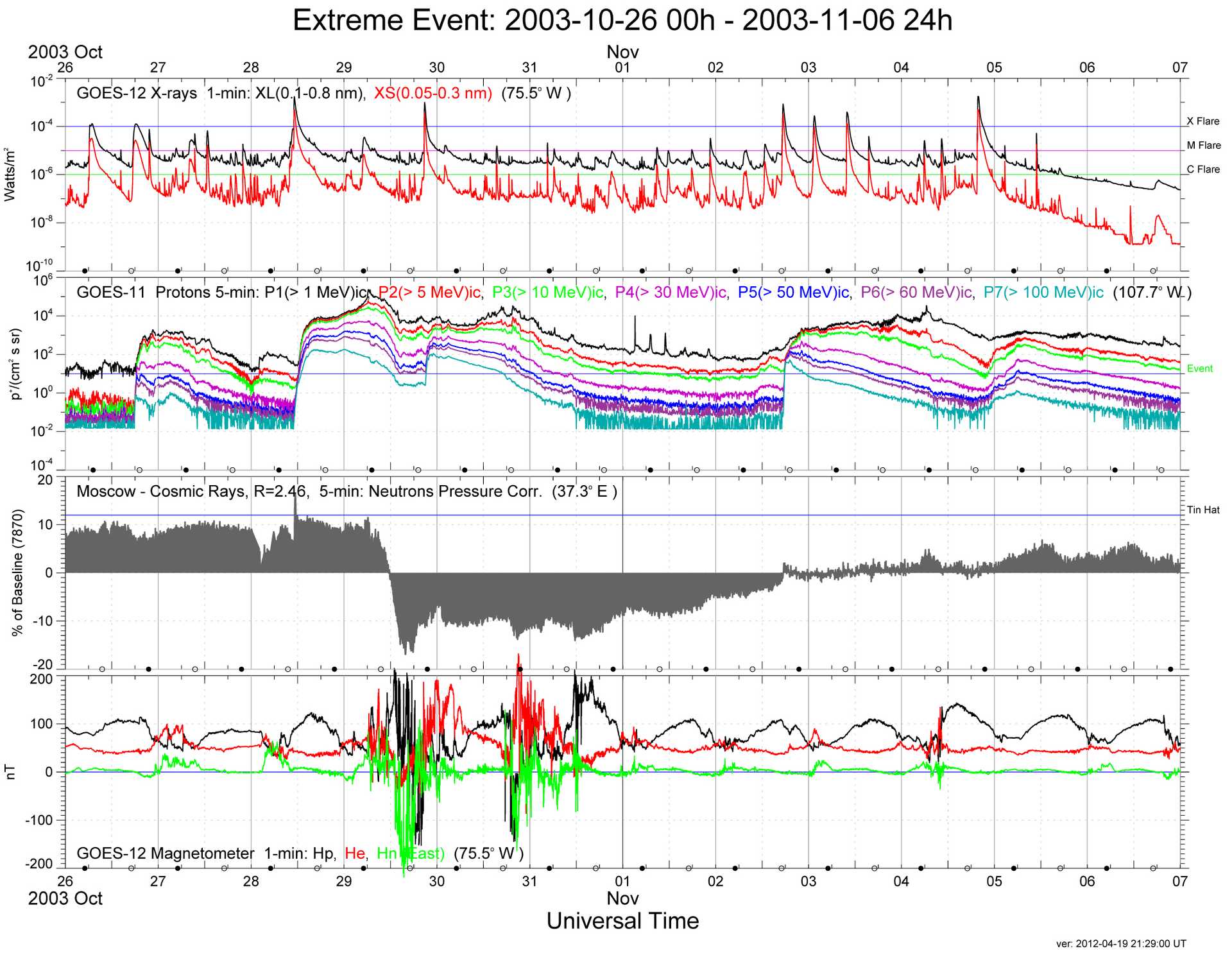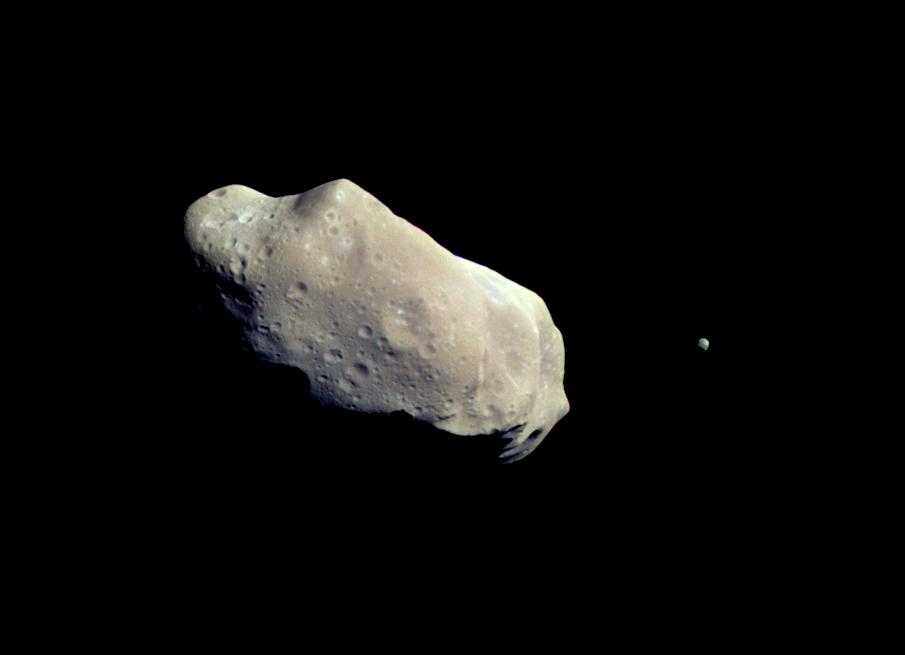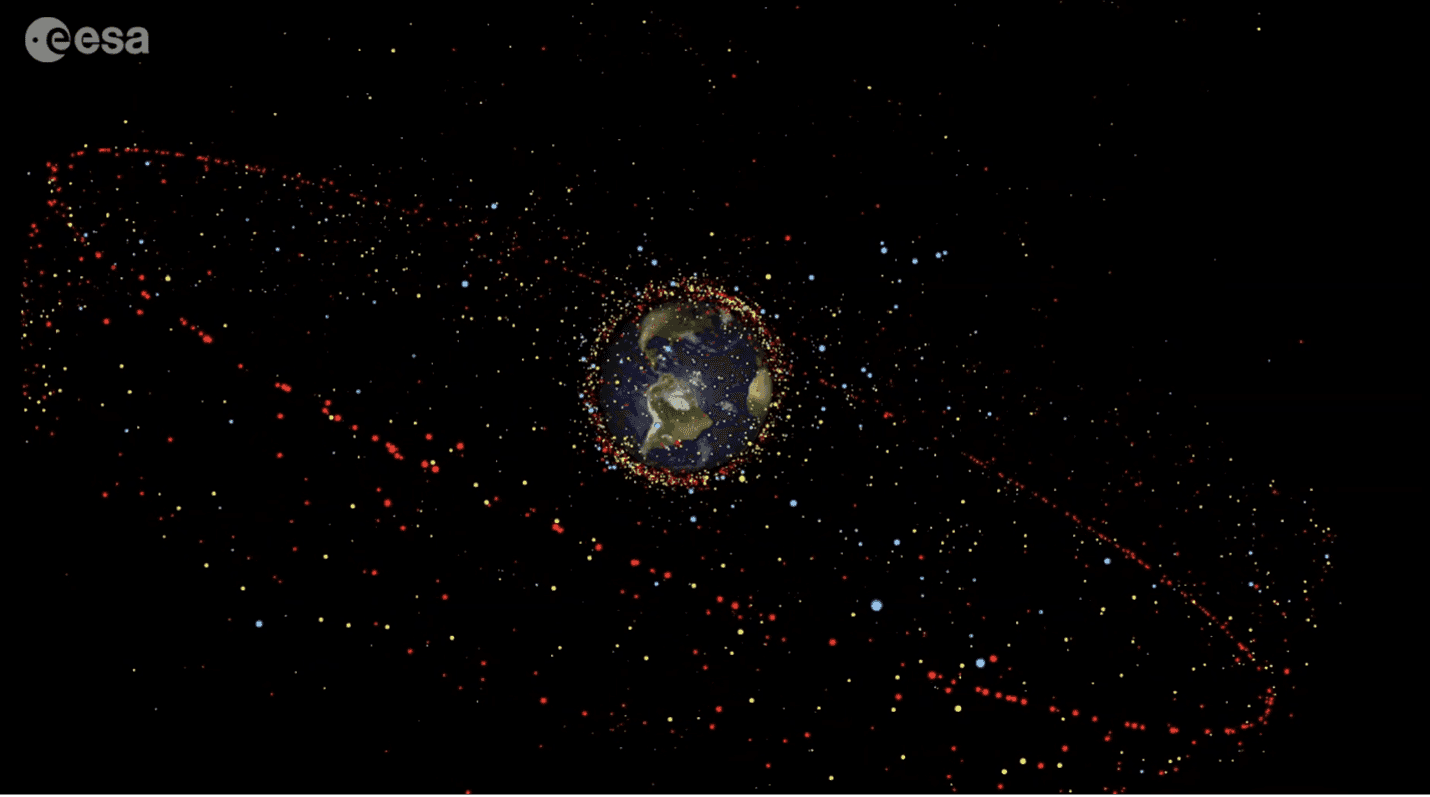In the realm of space security, a critical aspect revolves around understanding the risks that impede the safety of space operations. These risks encompass various factors, each posing unique challenges to the functionality and security of assets operating within the vast expanse of space. Exploring these risks, ranging from space weather and near-Earth objects to space debris, radio frequency interference and spectrum issues, provides a comprehensive view of the potential threats that could compromise the safety and reliability of space missions and infrastructure.
Space weather
According to the National Aeronautics and Space Administration (NASA), space weather refers to the fluctuations that occur in the space environment between the sun and Earth. Specifically, it encompasses various phenomena that influence both orbital systems and technologies on the Earth’s surface1. The main types of space weather and their effects on human space operations include solar flares, coronal mass ejections (CMEs) and solar energetic particles (SEPs).

Near-Earth objects (NEOs)
Near-Earth objects are asteroids and comets that have been pushed into orbits allowing them to enter the Earth’s proximity2. Each year, the Earth is hit by around 6,100 meteorites large enough to reach the ground. The majority of them land unnoticed in uninhabited areas. If the meteors are large enough and land in inhabited areas, they can cause property damage and possibly even deaths3.

Space debris
Space debris, also known as space junk, is defunct human-made objects in space that can no longer be maneuvered or controlled and are thus orbiting Earth uncontrollably. As of 12 September 2023, there were some 2,000 defunct satellites still in orbit. Moreover, there are about 35,060 debris objects regularly tracked by ESA’s space surveillance networks and maintained in their catalogue. Due to the capacity and capability limitations of tracking infrastructure, objects smaller than 10 cm cannot be tracked. According to the ESA’s statistical model, there are 1,000,000 space debris objects between 1 and 10 cm in size and some 130 million between 1 mm and 1 cm.4

Radio frequency interference (RFI)
Radio frequency interference (RFI) refers to unwanted energy that negatively affects radio communication systems, leading to performance degradation or information loss. The effects can range from mild disruptions to complete loss of service. Various devices that use radio frequency, including radio, cellular, radar, satellite, Wi-Fi, GPS and unmanned aircraft systems, are potentially vulnerable to RFI.5
Spectrum issues
The electromagnetic spectrum is the name given to a range of frequencies used for transmitting and receiving signals. It includes radio waves, microwaves, infrared, visible light, ultraviolet, X-rays and gamma rays.6 The demand for spectrum resources in space has been growing rapidly with the proliferation of satellites, space-based applications and the increasing reliance on space-based technologies. However, the spectrum is a finite and valuable resource that must be allocated and managed effectively to avoid interference and ensure the reliable operation of space-based systems.7 The limited spectrum increases the chance of interference between satellites.8 Greater competition for the available spectrum bands leads to diplomatic conflicts and increases the demand for constructive international collaboration to manage the electromagnetic spectrum effectively9.10
The International Telecommunication Union (ITU) oversees the regulation and allocation of frequencies across the electromagnetic spectrum, ensuring efficient and equitable use of this vital resource for global communication and technology development.11
Conclusion
The exploration of space brings immense benefits, but it is not without risks. Space weather, near-Earth objects, space debris, radio frequency interference and spectrum issues all pose significant threats. Space weather, comprising solar flares and energetic particles, can disrupt technologies in space and on Earth. Near-Earth objects, like asteroids, can cause damage upon impact. Space debris, from defunct satellites to smaller fragments, orbits Earth uncontrollably, posing risks to operational spacecraft and satellites. Radio frequency interference disrupts communication systems, affecting various devices relying on radio frequencies. The growing demand for the electromagnetic spectrum, due to satellites and space-based tech, raises concerns about interference and requires international collaboration for effective management. Addressing these risks necessitates collaborative efforts, technological advancements and global cooperation to ensure safe and sustainable space exploration and utilisation.
Quiz
Sources for this chapter
Cave, Martin/Doyle, Christopher/Webb, William. 2007. Essentials of Modern Spectrum Management. Cambridge: Cambridge University Press.
Cybersecurity and Infrastructure Security Agency. “Radio Frequency Interference Best Practices Guidebook, February 2020 - CISA”. cisa.gov, February 2020, available at: https://www.cisa.gov/sites/default/files/publications/safecom-ncswic_rf_interference_best_practices_guidebook_2.7.20_-_final_508c.pdf.
Chapman, Clark R. 2004. “The hazard of near-Earth asteroid impacts on earth”. Earth and Planetary Science Letters 222 (1): 1–15.
ESA. Space debris by the numbers, available at: https://www.esa.int/Space_Safety/Space_Debris/Space_debris_by_the_numbers (last accessed: 31 October 2023).
ITU. “About International Telecommunication Union (ITU)”. ITU, January 2024, available at: https://www.itu.int/en/about/Pages/default.aspx.
ITU. “How 5G Networks, Satellites and Spectrum Enable Access to Information”. ITU News, 15 December 2021, available at: https://www.itu.int/hub/2021/09/how-5g-networks-satellites-and-spectrum-enable-access-to-information/.
Lewis, James Andrew. “Spectrum Allocation for a Contest with China”. csis.org, 7 June 2023, available at: https://www.csis.org/analysis/spectrum-allocation-contest-china.
Lovett, Richard A. “Earth Hit by 17 Meteors a Day”. Cosmos, 30 April 2020, available at: https://cosmosmagazine.com/space/earth-hit-by-17-meteors-a-day/.
NASA. “Electromagnetic Spectrum - Introduction”. Astronomer’s Toolbox, March 2013, available at: https://imagine.gsfc.nasa.gov/science/toolbox/emspectrum1.html.
NASA. “Space Weather Phenomena.” Space Weather Phenomena | NOAA / NWS Space Weather Prediction Center, available at: https://www.swpc.noaa.gov/phenomena#:~:text=Space%20Weather%20describes%20the%20variations,in%20orbit%20and%20on%20Earth (last accessed: 31 October 2023).
Footnotes
-
NASA. “Space Weather Phenomena”. Space Weather Phenomena | NOAA / NWS Space Weather Prediction Center, available at:. https://www.swpc.noaa.gov/phenomena#:~:text=Space%20Weather%20describes%20the%20variations,in%20orbit%20and%20on%20Earth (last accessed: 31 October 2023). ↩
-
Chapman, Clark R. 2004. “The hazard of near-Earth asteroid impacts on earth.” Earth and Planetary Science Letters 222 (1): 1–15. ↩
-
Lovett, Richard A. “Earth Hit by 17 Meteors a Day”. Cosmos, 30 April 2020, available at: https://cosmosmagazine.com/space/earth-hit-by-17-meteors-a-day/. ↩
-
ESA. Space debris by the numbers, available at: https://www.esa.int/Space_Safety/Space_Debris/Space_debris_by_the_numbers (last accessed: 31 October 2023). ↩
-
Cybersecurity and Infrastructure Security Agency. “Radio Frequency Interference Best Practices Guidebook, February 2020 - CISA”. cisa.gov, February 2020, available at: https://www.cisa.gov/sites/default/files/publications/safecom-ncswic_rf_interference_best_practices_guidebook_2.7.20_-_final_508c.pdf. ↩
-
NASA. “Electromagnetic Spectrum - Introduction”. Astronomer’s Toolbox, March 2013, available at: https://imagine.gsfc.nasa.gov/science/toolbox/emspectrum1.html. ↩
-
ITU. “How 5G Networks, Satellites and Spectrum Enable Access to Information”. ITU News, 15 December 2021, available at: https://www.itu.int/hub/2021/09/how-5g-networks-satellites-and-spectrum-enable-access-to-information/. ↩
-
Ibid. ↩
-
Lewis, James Andrew. “Spectrum Allocation for a Contest with China”. csis.org, 7 June 2023, available at: https://www.csis.org/analysis/spectrum-allocation-contest-china. ↩
-
Cave, Martin/Doyle, Christopher/Webb, William. 2007. Essentials of modern spectrum management. Cambridge: Cambridge University Press. ↩
-
ITU. “About International Telecommunication Union (ITU)”. ITU, January 2024, available at: https://www.itu.int/en/about/Pages/default.aspx. ↩